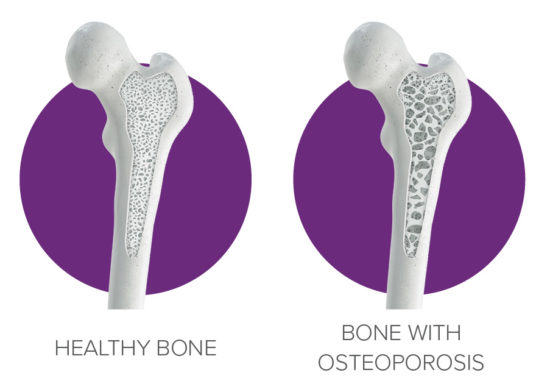What is Osteoporosis?
In people with osteoporosis, bones become weak and fragile – and may break easily. Bone is a living tissue containing calcium and other minerals. Throughout life, old bone is constantly broken down and replaced with new bone. In people with osteoporosis, bone loss may occur faster than bone formation. This results in the bone becoming weak and more likely to break (fracture) following a minor bump or fall.

What kind of fractures am I at risk of having with osteoporosis?
Many people diagnosed with osteoporosis have no symptoms and may not have realised that they have osteoporosis until they break (fracture) a bone. If you do have a fracture, The most common sites for a break are the spine, wrist, and hip, some may also experience fractures of the upper arm, and ribs. In some cases, you may have osteoporosis and never have a broken bone.
What vitamins and minerals should I take for osteoporosis?
Calcium and vitamin D are essential for bone health. Many Australians do not get enough calcium or vitamin D.1 Your doctor may check vitamin D levels in your blood and evaluate your calcium and vitamin D needs. If necessary, your doctor may advise you to take supplements and will recommend which type and how to take it. Your pharmacist can also provide general advice on vitamin D and calcium supplements, but make sure they know if you are already on osteoporosis treatment as many multivitamin & mineral supplements are not suitable.
What exercises are good for osteoporosis?
Some exercises are better at improving bone mass and strength than others. Exercises that place higher impact on the bones or that work the muscles attached to bones most at risk of fracture, including the hip and spine, are the most effective. Exercises which involve multidirectional movements and a form of resistance training will be the most effective . It is important to remember the impact from just walking will have no effect on the bone. It is best to avoid activities that bend or twist the spine. Ask your doctor to refer you to an exercise physiologist or physiotherapist for advice before starting an exercise program.
Where can I find further support about Osteoporosis?
The Healthy Bones Australia website can provide further information about living with healthy bones and preventing Osteoporosis.
References:
- Healthy Bones Australia.
Osteoporosis fact sheets. Available from Fact Sheets – Bone Health (healthybonesaustralia.org.au) Accessed May 2021.